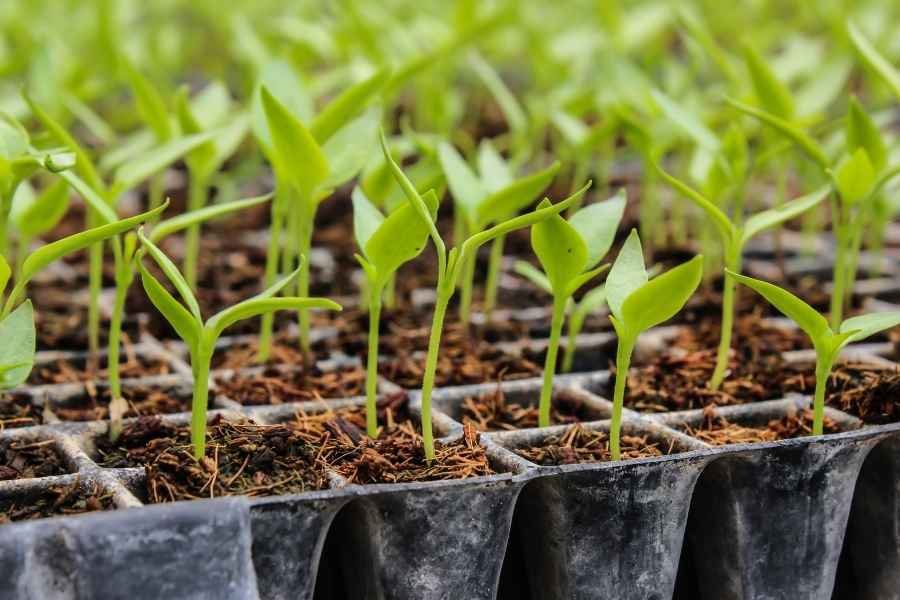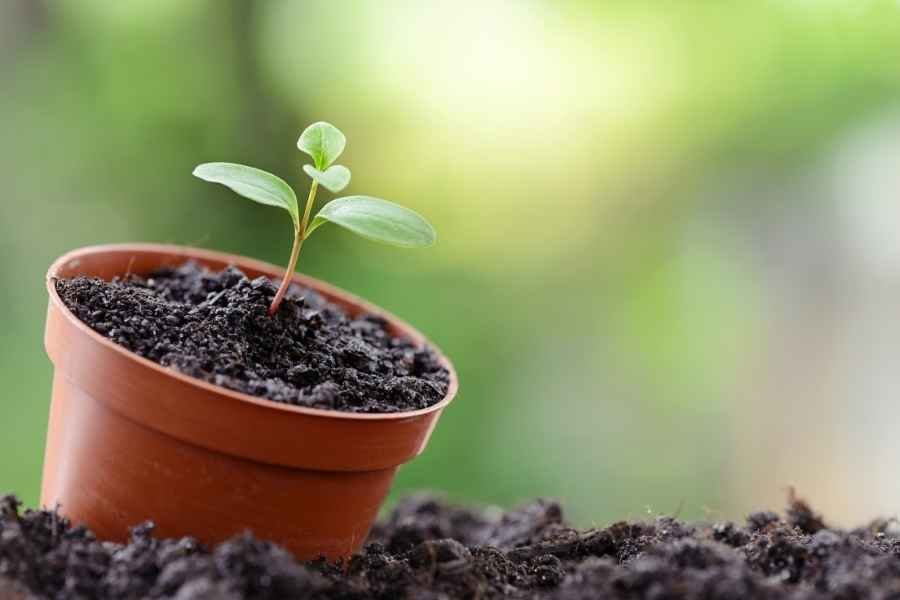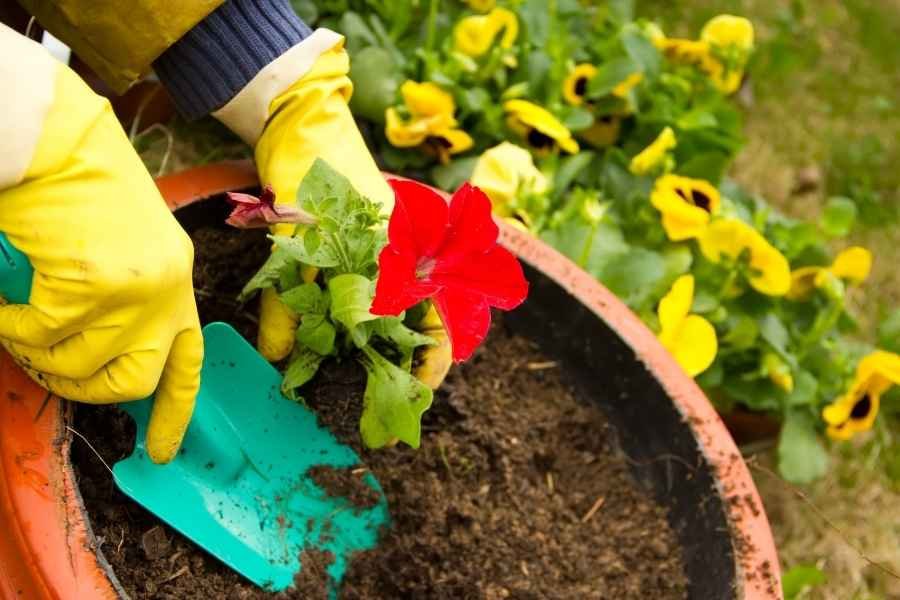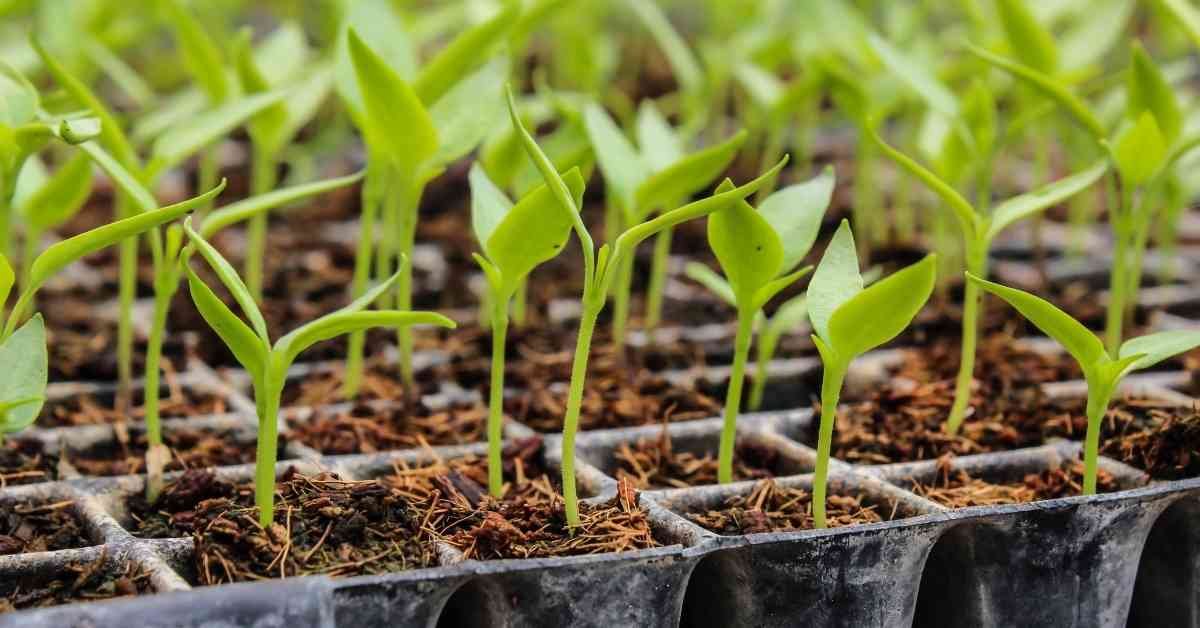This guide will show you the basics of transplanting seedlings with ease, ensuring your seedlings thrive and see better results in your garden!
Transplanting seedlings: 10 basic things
Wondering how to transplant seedlings correctly? This guide will walk you through the basics, from preparing at the beginning to ensuring your seedlings thrive.

Pulling or uprooting of seedlings for transplanting:
A few hours before pulling up seedlings, you should water the bed well to moisten the root zone and soften the soil sufficiently. Then, you’ve to pull and wash seedlings from monocot groups, such as rice and onion, to remove soil from the roots (naked). At the same time, you should pull up a lump of soil in the root of the seedlings belonging to dicot groups, such as tobacco, tomato, brinjal, and cabbage. You should have knowledge about normal and abnormal seedlings.
Sowing and planting:
Individual seedlings are uprooted with sufficient care to not get damaged except for tearing some roots. If seedlings are uprooted in phases, it is better to reduce the density by age and vigor by uprooting vigorous seedlings first, leaving smaller ones to grow further.
You’ve to uproot from one side if seedlings are uniform in vigor. Sometimes you can uproot and transplant seedlings temporarily in vacant portions of the bed or elsewhere to harden them. However, it would help if you kept seedlings from stale after uprooting.
If staling is unavoidable, keep them in a moist, cool shady place with frequent watering under loose conditions or with a lump of wet soil in the roots or in humid chambers. Keep the seedlings erect; otherwise, they will bend upward by their negative geotropic movement.
Before transplanting, you should take great care of seedlings during the handling. Any injury to vital parts leads to the death of the seedling. In addition, injury to vital parts may invite disease infestation. Don’t allow the seedlings to wilt or pile up during transport, which may cause suffocation and damage.

Best time for transplanting:
You must transplant the seedlings in a well-prepared field for raising crop plants. The best time for transplanting is the late hours of the day when the temperature cools down and humidity rises, but you can transplant at any time of the day if it is cloudy or raining or drizzling, or about to rain.
Fall is wonderful for transplanting, but spring is also good. Each season has its benefits. Fall is when many people transplant trees and bushes. Cooler, moister weather helps fall transplants.
Condition of seedlings:
Don’t transplant the seedlings with more shoot growth in dry-hot or chilly months. Instead, you should trim them to reduce the transpirational surface. Overgrown seedlings (with more extensive and thinner leaves or weak stems) droop or lodge a few hours after transplanting. It would help if you trimmed off these seedlings from the top with a sharp, clean knife with minimum injury.
Seedling age:
The three to four-functional leaf stage is determined to be a more suitable stage for most crops for uprooting, transporting, transplanting, and establishment—even if early seedling age offers quicker establishment. Such a stage coincides with a plant age of three to ten weeks.
Seedling number per hill:
You may transplant single seedlings in each spot at predetermined spacing or at the rate of two to three in each hill.
Plant density:
The number of harvestable plants per unit area depends on various factors. The crucial factors are species, variety, plant character and the duration, time and method of sowing, soil fertility status, the purpose of cultivation, management practices, and way of harvesting.
Placement of seedlings:
You’ve to place the seedlings so that the shoot remains upward and the root downward. Crooked or tufted roots and the underground shoot section might hinder establishment or perhaps result in death. Therefore, you must be extremely careful while planting seedlings. Ensure the seedlings are evenly distributed and in good touch with moist soil.
The soil around the root may be compacted lightly to provide more root-soil contact, remove any air gap, and consequently accumulate more water in the rhizosphere. Otherwise, it may induce the withering or decaying of roots. Sufficient watering in non-plastic soils immediately after transplanting serves the same purpose, along with supplying moisture to the root zone.

Seedling treatment:
You may treat the seedlings by dipping the root or immersing it in a solution or suspension for a few minutes for priming before transplanting. Such treatments may induce establishment and growth or tolerance against insect pests, diseases, and adverse weather and soil conditions.
Water temperature (especially for rice):
During transplanting in wetlands, the standing water temperature should be within the seedlings’ bearable limits (cardinal points). In addition, the depth of water should be as low as possible. Deep water (more than 10 cm) may cause seedlings’ to float or immerse, seriously affecting the plant population.
If the water temperature exceeds 40°C for half an hour or more, it is better to drain it out. Deep water not only affects the establishment of seedlings but also impairs tillering. Therefore, the progress of transplanting should be with the backward movement of the transplanter.
Transplanting becomes easy and quick if the transplanter moves to the leeward direction of the prevailing wind. Straight-row transplanting ensures a uniform plant population per unit area, making subsequent field operations easy and smooth. A skip row after ten to fifteen rows for rice and onion provides a better micro-environment for crop growth in closer-spaced crops.
Using five to ten percent more seedlings at regular intervals as buffer stock helps fill gaps with seedlings of the same variety, age, and physiological stage.
